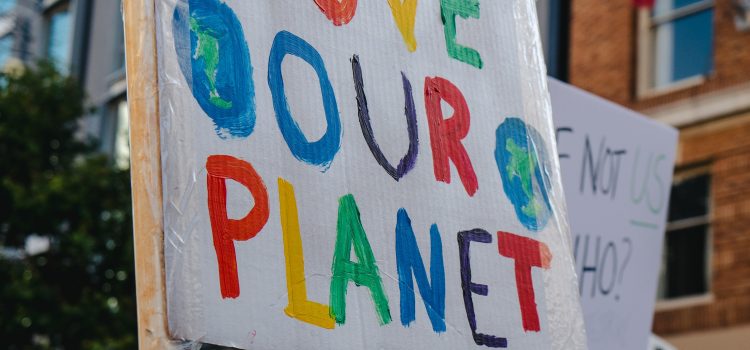
Introduction
Climate change is a pressing issue that demands immediate attention. It poses a threat to our planet and its inhabitants, and we need to take action before it’s too late. One of the most effective ways to tackle this problem is through innovation – the development of new ideas, technologies, and approaches that can help us mitigate or adapt to the effects of climate change. In this blog post, we’ll explore how science is leading the way in driving innovation for tackling climate change, why it’s so important, as well as some of the challenges we face along the way. So sit back, buckle up and let’s dive into this fascinating topic!
What is innovation?
Innovation is a term that often gets thrown around, but what does it actually mean? At its core, innovation is about creating new ideas or improving existing ones to better meet the needs of various industries and society as a whole. It involves taking risks, thinking outside the box and challenging traditional ways of doing things.
Innovation can come in many different forms, from technological advancements to creative solutions to social issues. It’s not limited by industry or field and can be applied to everything from healthcare to transportation.
One key aspect of innovation is collaboration – bringing together individuals with diverse backgrounds and skill sets in order to generate fresh perspectives on complex challenges. This fosters an environment where new ideas are encouraged and tested through experimentation.
Ultimately, innovation plays a crucial role in driving progress and growth across all sectors of society. By encouraging creativity and pushing boundaries, we have the potential to create sustainable solutions for some of our most pressing global issues – including climate change.
The link between innovation and climate change
Innovation and climate change are closely linked together. Climate change is a global issue that requires innovative solutions to address its many challenges. To better understand this link, we need to first define what innovation means.
Innovation refers to the process of creating new ideas or improving existing ones in order to solve problems and meet needs. By using innovation, we can develop new technologies, products or services that enable us to reduce greenhouse gas emissions and adapt our societies and economies to a changing world.
One example of how innovation is being used in tackling climate change is through renewable energy sources such as solar power, wind power, hydropower or geothermal energy. These sources have become increasingly affordable over time thanks to technological advancements which make them more efficient at converting energy into electricity.
Another way innovation has been applied in addressing climate change issues is by developing smart grids that can manage renewable energy production from multiple sources while reducing waste and maximizing efficiency. Additionally, innovations in transportation have led to electric cars becoming an increasingly viable alternative for people looking for ways they can cut their carbon footprint.
It’s clear that innovation plays a critical role in confronting the challenges posed by climate change. With continued investment into research and development efforts around sustainable practices across industries like agriculture, manufacturing or construction – there’s no doubt these initiatives will continue yielding positive results towards achieving meaningful progress against global warming concerns.
The benefits of innovation in tackling climate change
Innovation has the potential to bring about countless benefits in our efforts to tackle climate change. One such benefit is increased efficiency and reduced emissions in various industries, including transportation and energy production. By developing new technologies that rely on renewable energy sources, we can significantly reduce our reliance on fossil fuels and lower our carbon footprint.
Another benefit of innovation is the creation of green jobs. As more companies shift towards sustainable practices, there will be a growing demand for skilled workers who are well-versed in environmentally-friendly technologies. This not only supports economic growth but also promotes sustainability as an integral part of modern society.
Innovation also allows us to address climate change from multiple angles simultaneously. For instance, while some technologies may focus on reducing carbon emissions directly, others may develop ways to remove existing greenhouse gases from the atmosphere or promote reforestation efforts.
Moreover, innovation can help bridge gaps between different sectors by encouraging collaboration between researchers, policymakers, businesses and communities at large. When all parties work together towards a common goal – combatting climate change – it becomes easier to achieve meaningful progress.
Embracing innovation offers hope for a greener future where both environmental and human needs are met sustainably.
The challenges of innovation in tackling climate change
Despite the benefits of innovation in tackling climate change, there are also several challenges that come with it. One significant challenge is the need for large-scale investment in research and development to develop new technologies, which can be costly and time-consuming.
Another challenge is the resistance from industries who may be resistant to change or reluctant to adopt new technologies due to their reliance on existing infrastructure or fear of losing profits. This can slow down progress towards sustainable solutions.
Additionally, there are cultural barriers in some societies where environmentally-friendly practices or policies may not be embraced due to a lack of awareness or understanding about the importance of sustainability.
Moreover, developing countries often face additional obstacles such as limited access to resources or technology necessary for implementing innovative solutions.
Policy-making and regulation play an essential role in driving innovation adoption but governments around the world continue struggling to implement effective regulations that encourage businesses and individuals alike towards more eco-friendly decisions
While innovation holds tremendous potential for addressing climate change issues on a global scale; its success hinges upon overcoming numerous economic, societal and political hurdles along with public misconceptions regarding sustainability.
Conclusion
Innovation is an essential tool in the fight against climate change. Through new technologies, ideas and approaches, we can reduce our carbon footprint and create a more sustainable future for generations to come. However, innovation alone is not enough. We also need strong policies that support clean energy solutions and encourage businesses to invest in environmentally friendly practices.
As individuals, we can play our part by supporting companies that prioritize sustainability and reducing our own carbon footprints through small changes in daily habits. By working together towards a common goal of protecting the planet, we can make significant progress in tackling climate change.
So let us continue to push forward with innovative solutions while also advocating for policy changes at all levels of government. With science leading the way, there is hope for a better tomorrow – one where we live harmoniously with nature rather than destroying it beyond repair.










